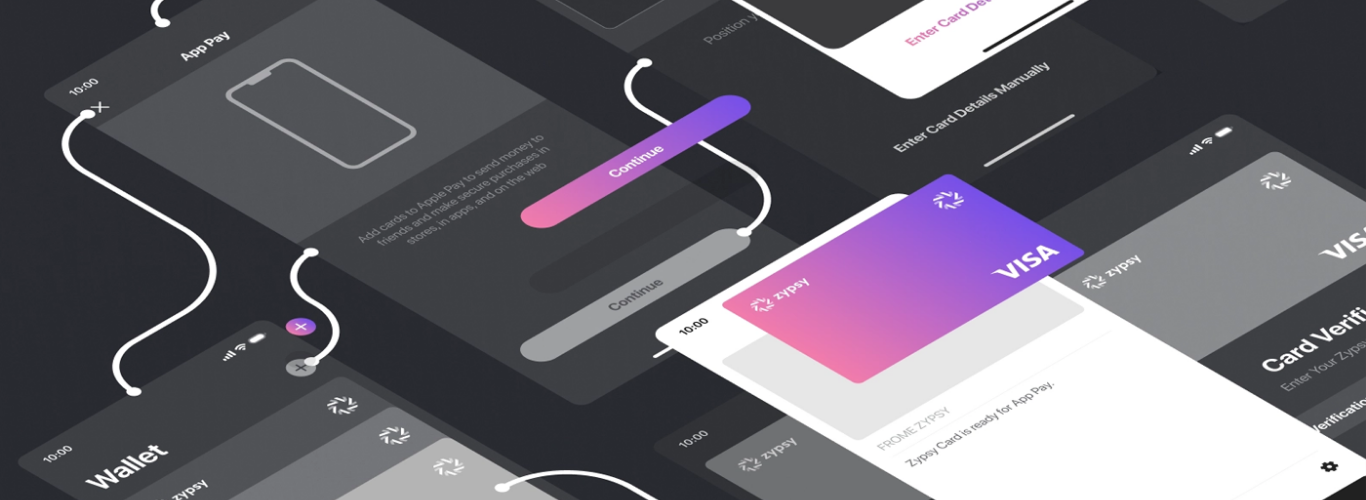UX is an ever-developing discipline by definition. Providing distinguished user experiences requires constant adaptation to a user’s changing needs, which are in turn affected by everything from new technologies to psychological factors.
So, keep an eye on the road ahead and read on for a run down of the top UX trends coming up in 2019!
2019 UX Trends #1: Omni-Channel UX

Brands no longer interact with users and customers through a single channel. With the rise in connectivity, we saw mobile taking the lead in the past few years when it came to providing next-level UX experiences, but the story is gradually changing. Today, users can engage with a business through multiple channels, often with a specific goal in mind. So it no longer matters what channel they’re using, it all boils down to completing an action.
We are now shifting from a cross-channel experience, where experiences are distinguishable by platform, to an omni-channel experience, where one all-encompassing experience spans across platforms.
This change in perspective is what is fueling the concept of omni-channel UX. This approach hinges on providing a fluid, seamless experience which allows users to glide through a series of interactions and journeys, regardless of device.
An example of this would be using Google maps to search for directions on your desktop PC, then sending these directions to your phone, to be used once you get in your car. While this is only a dual application of omni-channel UX, the growth of the internet of things (IoT) will allow us to see this experience spanning numerous devices.
When designing an omni-channel experience you need to keep a few factors in mind:
1- Consistency
To provide a true omni-channel experience, users must feel familiar with the experience across all devices. Journeys, functionalities, and branding must follow the same logic across all channels to avoid any frustrations and new learning curves.
2- Context
Being consistent does not mean that an omni-channel experience does not adapt to different channels according to context. Quite the opposite, a well-designed experience will bring forward and highlight the functionalities that are most commonly used within a specific context. The key here is to capitalize on the technological capabilities of each channel to deliver a stellar experience. For example, a desktop version of a store’s website might display detailed information about the brand, while a mobile version might emphasize store locations and use GPS to identify the nearest branch to your location.
3- Seamlessness
A user must be able to start a journey on one device and complete it on a different one without feeling any sort of interruption and without facing roadblocks. This requires that all channels contain all needed information to perform actions, and have the ability to pick up on actions started on a different channel. So you might use a ticketing website to search for airline tickets and select a few options, then show the options you selected to your friend on your mobile phone at lunch, and then finally complete your purchase on your tablet later that night.
2019 UX Trends #2: Voice User Interfaces (VUIs)
In its 2017 predictions gartner expects that, “By 2020, 30 percent of web browsing sessions will be done without a screen”.
Pointing, clicking, and tapping are still the primary ways users interact with digital experiences. But voice is quickly gaining ground and becoming a favorable option with many useful applications.
As connectivity increases, so does the need for VUIs. So it seems logical for us to see a rise in the use of VUIs as users need for connection expands to include situations like driving, exercising, cooking and any handsfree uses in general.
However, while Siri, Cortana, Alexa, and Google Assistant are becoming go to options for many situations, voice interactions still have a long way to go before they can be depended on for more complex tasks. This is mainly due to the limitations of conversational AI which is still in need of development to be able to pick up on natural speech patterns and context.
2019 UX Trends #3: User-Responsive/Personalized Design

Increasing user engagement is no longer about cleverly-designed journeys that come in a one-size-fits-all package. Highly personalized experiences started to emerge in 2017 and will definitely spread in 2019. This UX approach does two things:
1- It fully understands and acknowledges that users have become disinterested in irrelevant or generic experiences/content.
2- It tweaks and tailors parts of the UX to a user’s preferences, previous choices, or traits thereby creating a mental rapport of sorts that encourages engagement.
We’ve seen several applications in user-responsive design; take Spotify’s personalized playlists (based on data pertaining to your listening behavior), or perhaps Amazon’s suggested products (based on previously purchased or browsed items), or even Netflix’s personalized push notifications that tell users about newly released episodes of shows they’re watching, or make suggestions based on viewing history.
The gradual adoption and spread of user-responsive design will allow the development of smarter algorithms, capable of analyzing individual user behavior and displaying relevant content accordingly.
2019 UX Trends #4: Microinteractions

Dan Saffer, author of Microinteractions describes that. “it’s the details that make systems feel more human, and more humane.”
Microinteractions at their core, give UX a warm, personal touch by providing users with feedback, acknowledgment, instructions, or even pure light-hearted entertainment. They are designed with one specific function in mind and are essentially used with things like toggling features, adjusting settings, connecting devices, highlighting calls to action, displaying progress, or generally providing feedback in the form of delightful content. The uses are endless and ultimately depend on the desired goals, which is why in 2019, microinteractions are going to become even more popular as designers focus more on providing human-centered experiences.
Econsultancy.com, collected a number of delightful microinteractions from mobile applications that emphasize how one small element can go a long way in elevating UX. We particularly love Virgin America’s friendly feedback upon filling in personal information and Slack’s creative take on the laborious process of entering passwords.
2019 UX Trends #5: Content-Centered Experiences

It is well known among the digital community that content is king. Without content after all, how would you communicate with the users you’re designing experiences for? However, up until recently, content had been overshadowed by sometimes overbearing design gimmicks, which has proven detrimental to content strategy goals. 2019 will see more focus on content-centered design, featuring a design that is moulded around content with the savvy use of whitespace, functional minimalism, and clear visual hierarchy.
Honorable Mention
Though not particularly trendy in 2019, wireflows have been gaining a bit of traction as a powerful UX design tool. Learn all you need to know about them in our article on wireflows.
Have any other 2019 UX trends to add? Join the conversation and let us know what you think!








